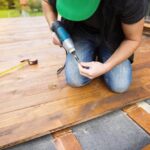Your roof is one of your important assets, as it forms the protective layer over your beloved house. As such, you would not want any kind of damage occurring to your roof, which ends up putting you in financial constraints and mental stress.
Instead of waiting for calling a contractor after severe damage has been done, it is better to inspect your roof in the initial phases only.
Herein this article, we have identified the 5 most common roofing problems, and a few DIY tips to encounter those problems. Well, let us get to it, shall we?
Roof Leaks

If you notice a leak and consider tracking it, take a flashlight and use the attic if you have access to it. If not, then go up on the roof and examine if there are water stains, black marks or mold.
For small leaks, just clip the nail at the underside of the roof. This nail attaches the roof sheathing to the rafters. Nail the roof sheathing using side-cutting pliers.
Cracked Housing and Broken Seams on Roof Vents
Plastic roof vents may have cracked housings while metal roof vents may have broken seams. The only solution is to replace the damaged vents. Do check for missing nails at the bottom edge of the base and try replacing them with rubber-washered screws.
Wood Rot in the Chimney
The chimney on your roof forms a dam, which may be subject to debris and moisture build-up. This in turn will lead to wood rot and hence intense damage.
For chimneys wider than 30 inches, use a cricket or saddle to direct water and debris around the chimney and hence off the roof. If you get a new roof, check your contractor’s bid if there’s a cricket in it.
Rotting Sidewalls

If you have an intersection between your roof and a sidewall, your roof runoff may flow down the wall. The case may be worse if you have a door or a window just below, and the water starts seeping behind the trim. This seeping will start causing rot.
The bad point here is that most people notice it after years when rot starts destroying sheathing and framing. Here what you can do is install kick-out flashing underneath the first shingle.
Wicking Water Behind the Gutter
When you get new shingles, make sure to get gutter aprons as well and add them then only. This is because; water tends to wick behind the gutter when it is flowing off the edge of your roof.
It may then cling to the underside of the shingle and dribble toward the fascia. You will notice this if there are water stains below the gutter.
Got Some Roof Fixing to Do?
Sure, there are plenty of roof issues that you may not be able to do by yourself. You can simply contact the Perthroofingandgutters.com.au for any kind of small or big issues concerning your roof!






